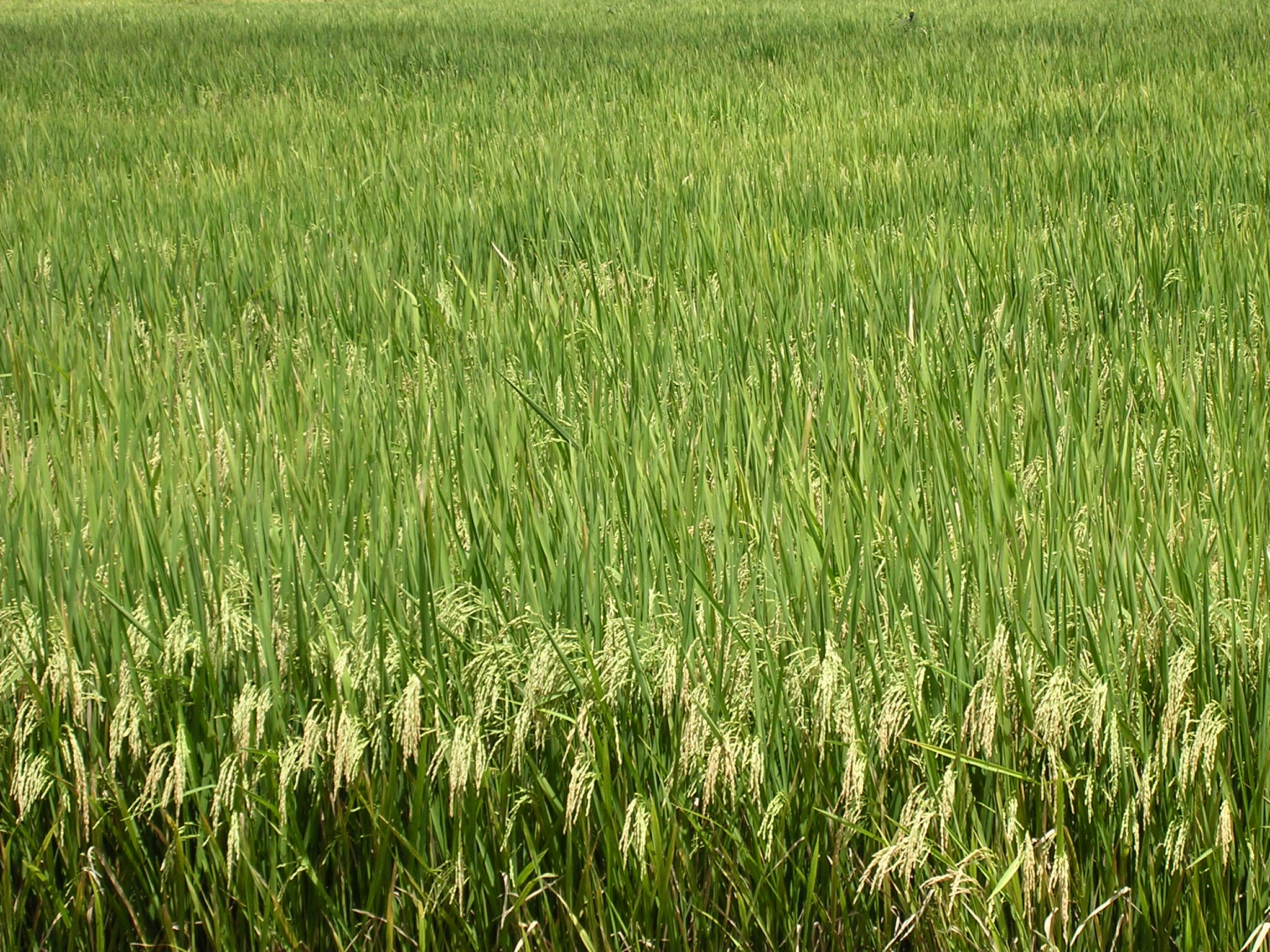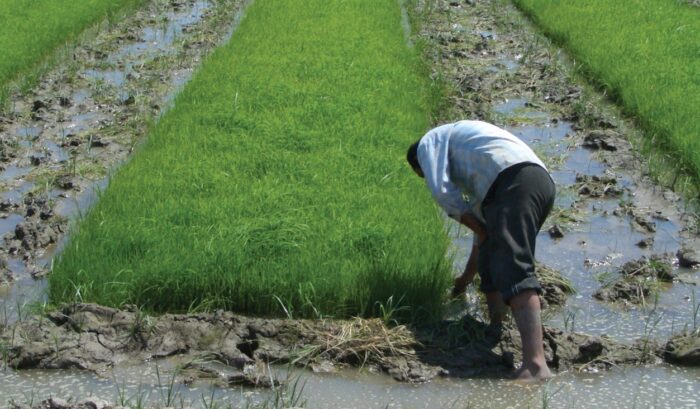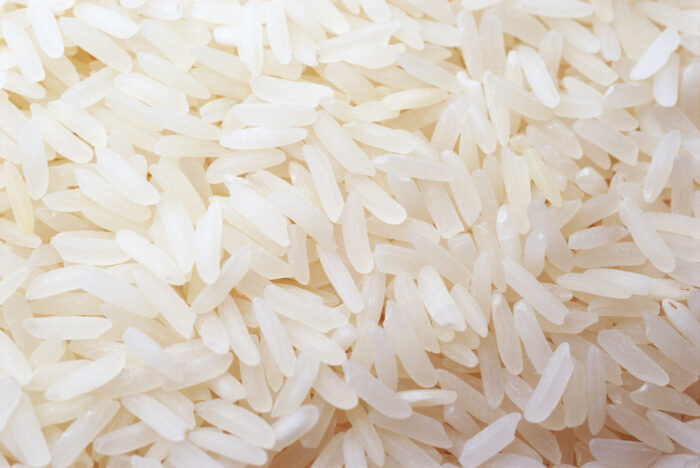
Dr Terry Mabbett explains the system that can help African rice farmers ensure complete nutrients for the crop.
Feeding rice through the foliage
LOWLAND RICE FARMING may only realise half the achievable grain yield even when modern hybrid varieties are used. Climatic conditions and the extent to which these vary from year to year may restrict yield but are clearly beyond control of the rice farming fraternity. However, fertilisation is well within the remit and control of rice farmers. For instance, placement of potassium (K) fertiliser can be expected to increase rice grain yield by 20%.
However, fertiliser failings and impact on yield potential may not be due to insufficient fertiliser but inefficient use and application of available resources. The efficiency of nitrogen (N) fertiliser can be maximised by improved application timing and synchronisation with those stages in the rice crop cycle having the highest requirement for this macronutrient, as well as due regard to placement in the soil. Similarly, phosphorous (P) must be targeted at key stages in the crop growth and development cycle.
Foliar feeding complements base fertilisation to offer dual advantages of speed to improve timing in relation to nutrient-demanding stages in the rice crop cycle and exact placement to maximise uptake and minimise loss and waste.
The answer and solution lies in foliar feeding whereby nutrients are supplied in a ready-plant-available form as soluble-liquid or soluble-powder delivery systems, mixed with appropriate volumes of water and sprayed onto the crop foliage. Foliar feeding is the fastest way to correct plant and crop deficiency of a specific nutrient. It is of particular importance and benefit where soil nutrients, such as zinc are not available in the plant because they are locked up as zinc phosphate or calcium (Ca), an essential secondary (meso) nutrient, due to the inherent poor mobility of this divalent cation (Ca2+).
From leaf surface to cytoplasm
Journey from leaf surface to cell cytoplasm for soluble nutrients applied by foliar feeding, is quicker and altogether less encumbered than more tortuous journeys for nutrients from soil into the rice plant’s root system. Soluble nutrients in the spray tank are in a stable solution, unthreatened by an inappropriate pH background or counteractive compounds as is frequently so for soil-based nutrients.
The foliar feeding journey is divided into two distinct and separate stages:
● Movement of nutrients from foliar surface into the leaf tissue via penetration or absorption
● Movement of nutrients from point of penetration to various sites in the plant by translocation
● Two main points of entry are direct entry via the cuticle and entry via the stomata
Extent and speed of entry via stomata will clearly depend on stomatal density and distribution across the leaf surface and the extent to which stomatal pores are open, depending on the time of day and atmospheric conditions including relative humidity. All that said, the journey for soluble nutrients applied by foliar feeding is more rapid and less obstructive than for nutrients making their way from the soil solution, into the roots and up into the aerial parts of the plant.

OMEX Bio 20 is applied in the rice nursery to boost root biomass and to secure seedling establishment.
Soluble nutrients – what’s in the OMEX store for rice farming?
Rice farmers will realise the benefits of foliar feeding through soluble nutrient products that can satisfy all nutrient requirements.
Omex Agrifluids is a R&D based company in the East Anglian region of England, with a product profile which spans the spectrum of essential plant nutrients and is used worldwide on the widest range of crops including rice. Dr Ben Odunlami, technical sales manager for Africa and managing director, Peter Prentis explained in detail about the OMEX products for rice in Africa.
Zinc seed dressing – the means to an end
“First on the agenda is a Primer Bio Zn applied as a seed dressing (3 ml product/kg rice seed). Clearly applied at the very beginning of the crop cycle, but ironically to ensure the rice harvest should contain sufficient zinc to ensure the nutrition quality of the rice grain,” said Odunlami.
“Primer Bio Zn is a high concentration suspension seed treatment containing 700 g/l (70% w/v) Zn and a natural biostimulant sourced from a marine alga (seaweed), “said Prentis.

Use of OMEX’s high zinc products ensures the enhanced human nutrition required of the harvested grain.
Stimulating seedling growth OMEX Bio 20 is another product in which key nutrients are boosted by the addition of a biostimulant. “OMEX Bio 20 is specially formulated to supply rice seedlings with a nutrient profile that promotes greater root biomass to maximise utilisation of moisture and nutrients and therefore plant growth,” added Prentis.
Post-transplant sprays at tillering
Transplanted rice plants at the tillering stage receive a second ‘shot’ of OMEX Bio 20 (1.0 – 2.0 l/ha) and a second boost with zinc this time as Kingfol Zinc, a flowable foliar applied nutrient formulation, containing 700 g/l (70% w/v). Odunlami told African farming, “How the zinc contained in Kingfol Zinc is zinc oxide, which has small particles together with enhancers to optimise the uptake by the leaves.”
Post-transplant sprays at panicle initiation and spike emergence
Key priorities at the crucial panicle initiation and spike emergence stages are broad and balanced applications of nutrients to sustain growth and development. These are specific applications of calcium and boron treatments for general all round tissue strength and resilience.
Odunlami says the breadth and balance is provided by combinations of four OMEX products – OMEX K41 at 3.0 l/ha, a water soluble emulsion containing nitrogen, magnesium, sulphur with super high potassium (41% w/v); calcium and boron are supplied by OMEX CalMax B (calcium 22.50% w/v, boron 1.53% w/v plus chelated micronutrients, nitrogen and magnesium) at 2.0 l/ha, OMEX Bio 20 and Kingfol Zinc.

